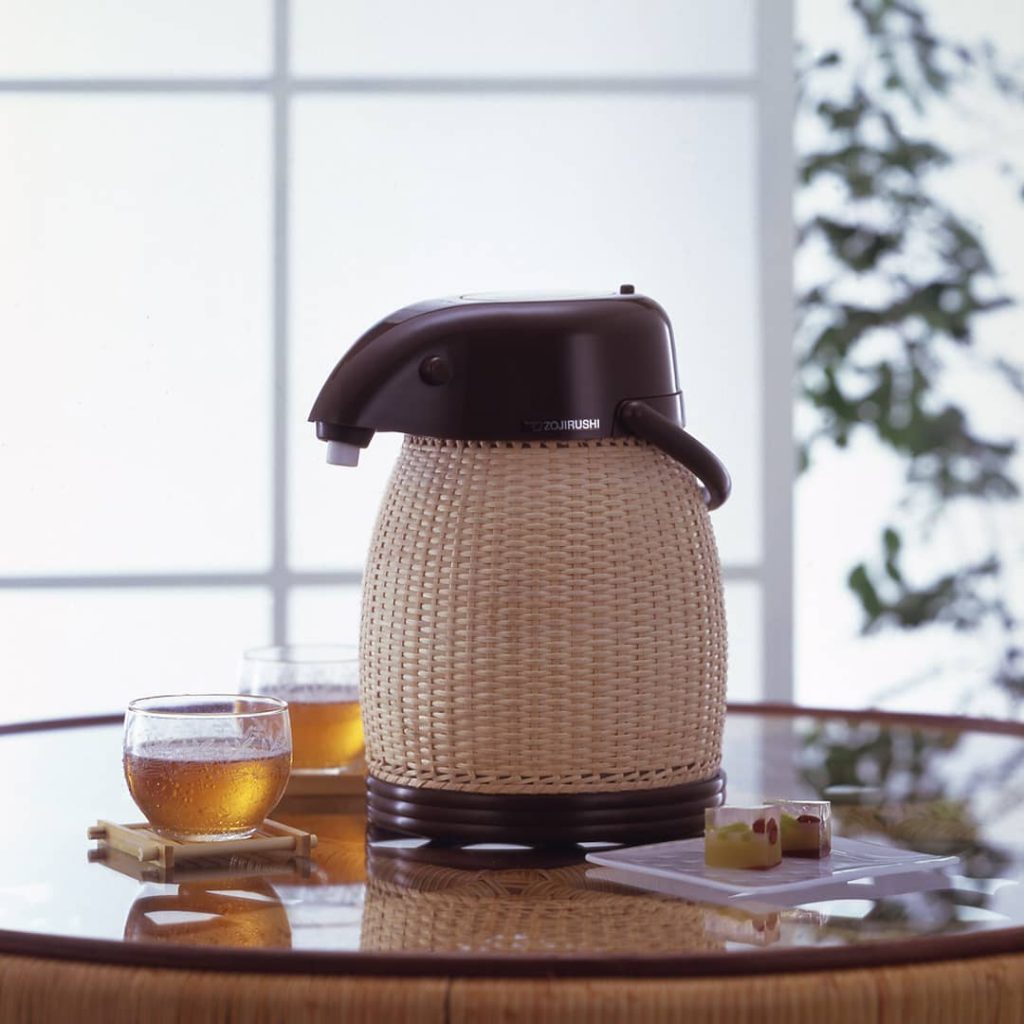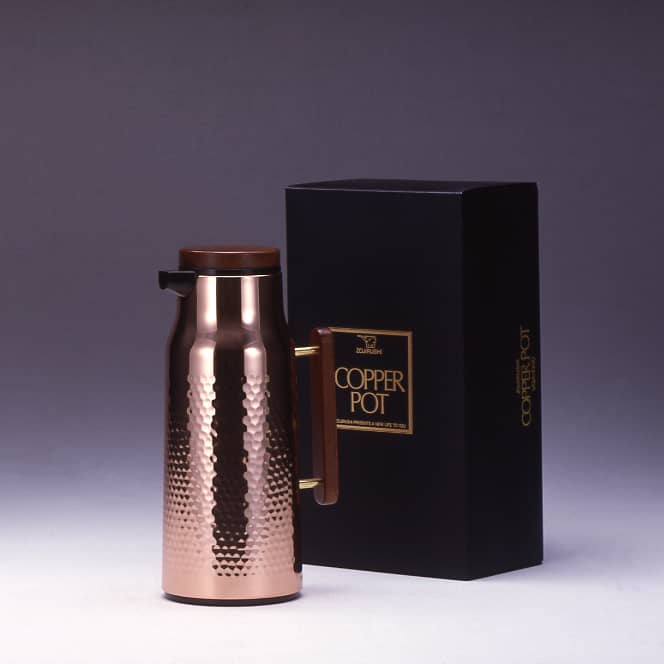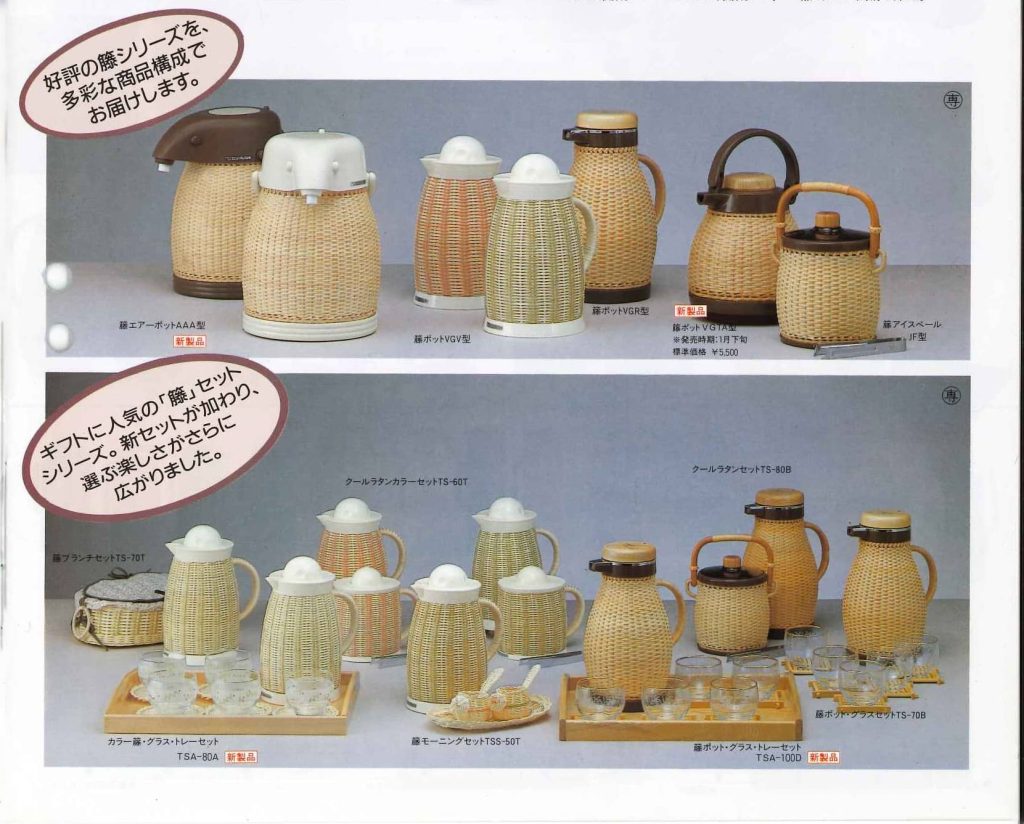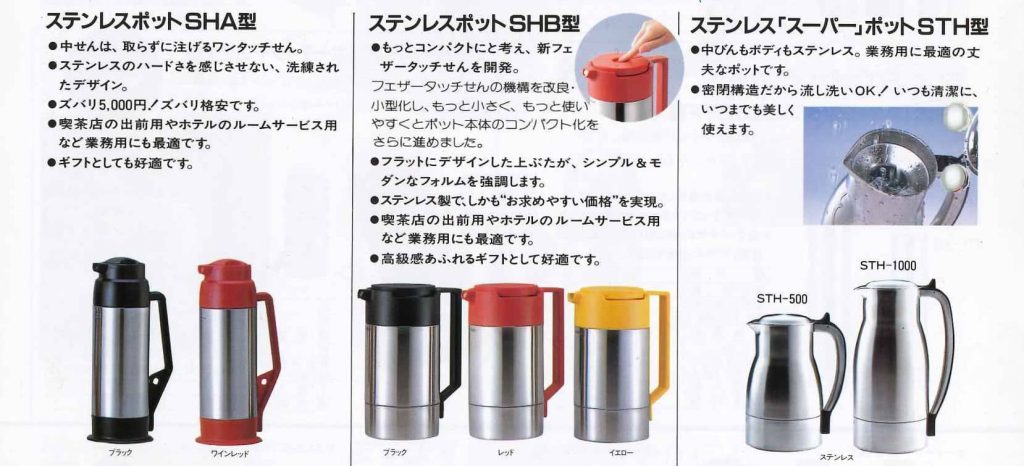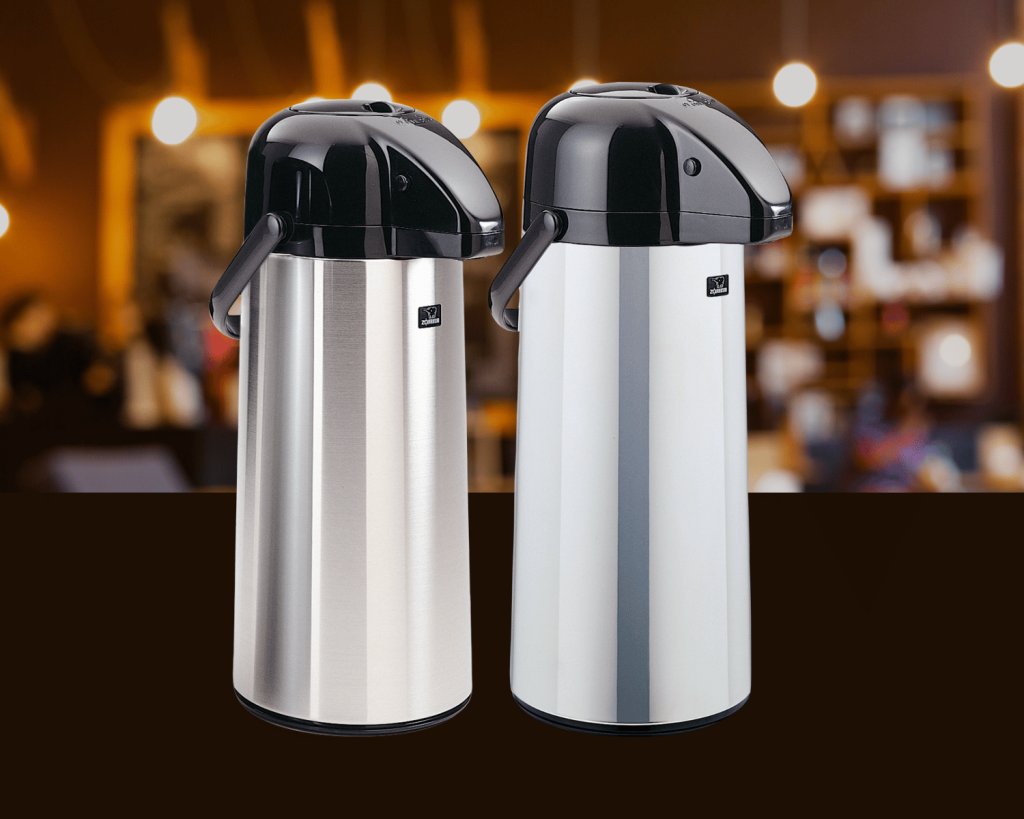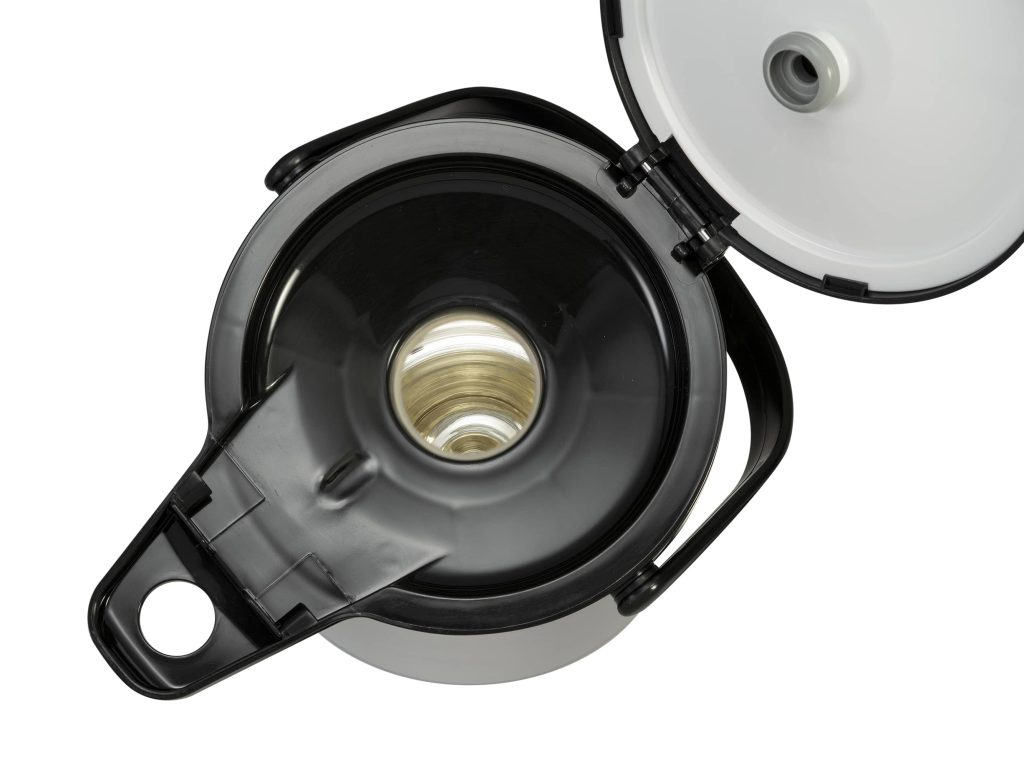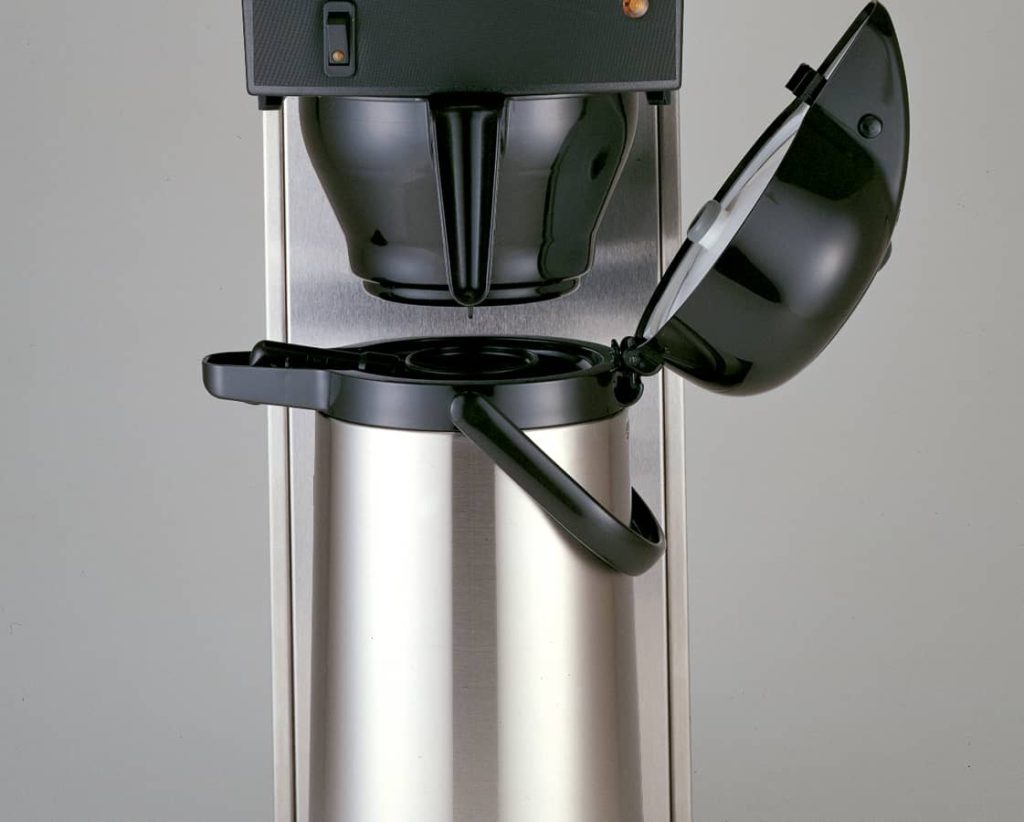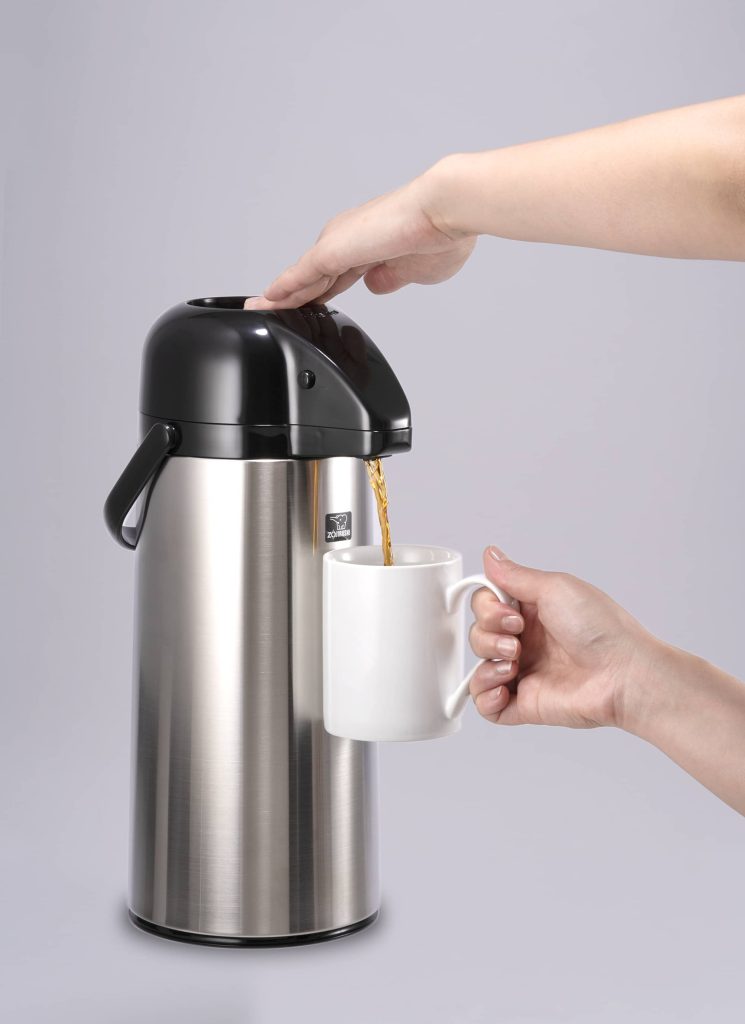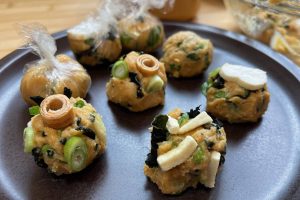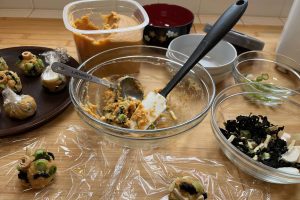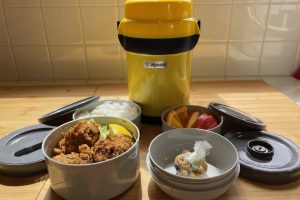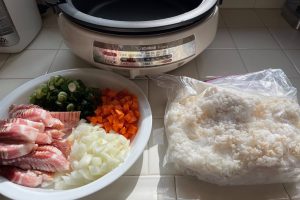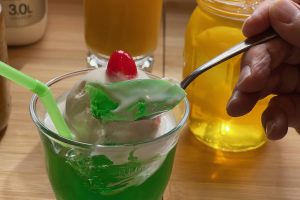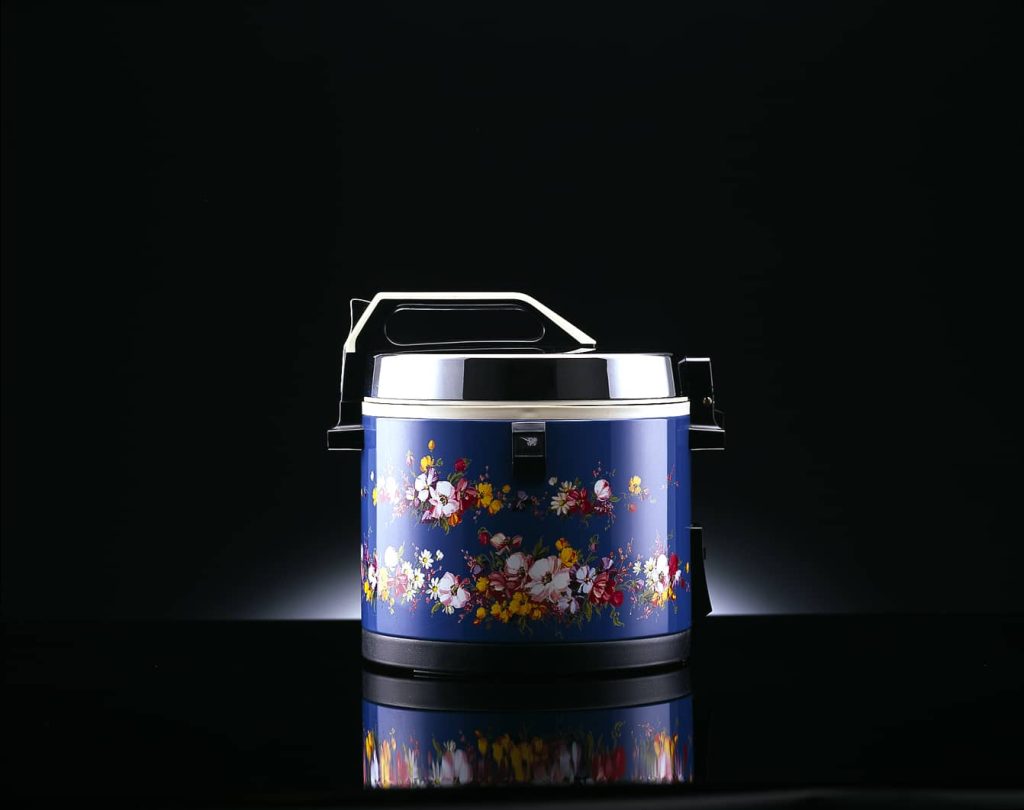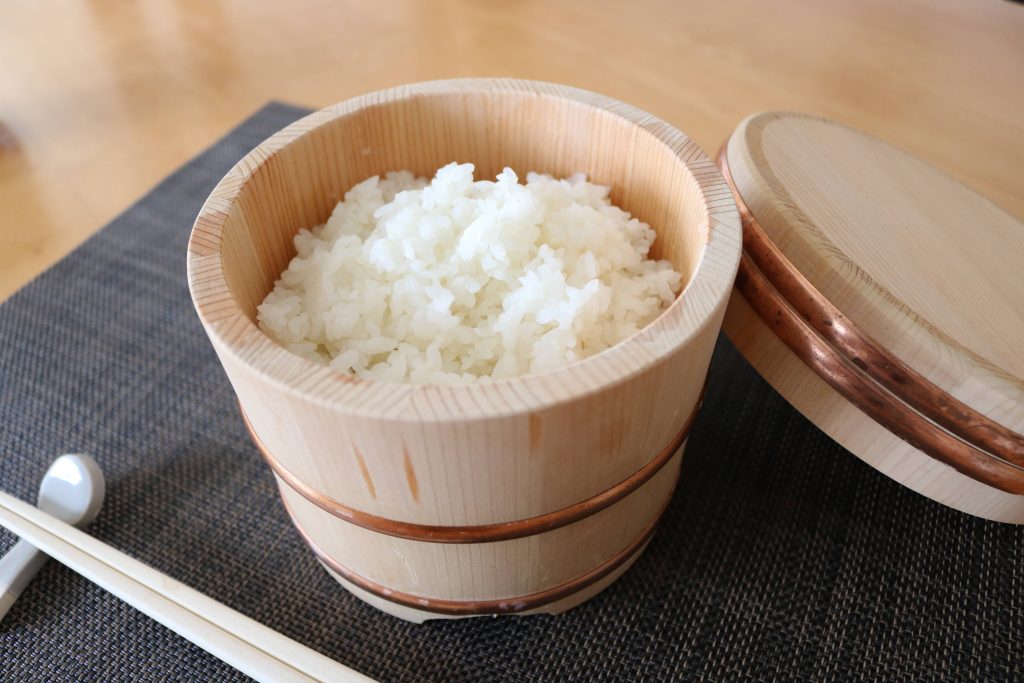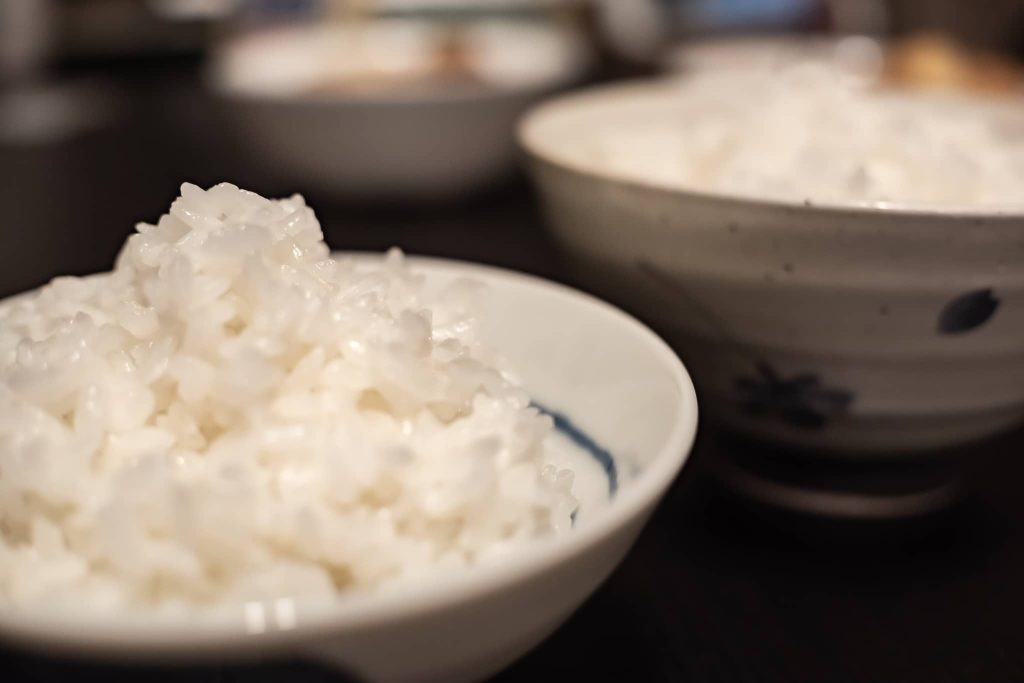
Just for fun, let’s see how many holidays in May I can cover using my Zojirushi stuff. Ready? The first one is obvious—Mother’s Day! This was my spread for Mom’s Day; homemade cake and a salad. I made Strawberry Short Cake using the cake settting on my breadmaker. This was my first try so it wasn’t perfect, but I’m betting you guys can do better with practice. Here are the steps:
1. First, bake the cake. The bread machine will do everything. Then slice the top off so it'll be easier to decorate.
2. Slice it in half. Just use a bread knife or bread slicer to do this as evenly as you can.
3. Fill it with strawberrries. Make your own homemade whipped cream or just buy Cool Whip and layer the bottom slice with cream, sliced strawberries, and more whipped cream.
4. Frost the cake. Use the rest of your whipped cream to decorate all around and on top of your cake. Top it with whole strawberries and there it is!
OK, I’m not a pastry chef and it may not look professional, but it’s very cute, right? I mean, it’s the thought, right? Right? This actually tasted pretty good tho because the strawberries were sweet.

By the way, did you know May is also National Strawberry Month? Well, now you do.
Let’s get back to that salad I made for National Salad Month. What?! What? You didn’t think I’d miss that opportunity, did you? This is a legit Chinese Chicken Salad the way the locals eat it. (Of course there are a gazillion variations so don’t come at me please.) Bake some chicken breast in your toaster oven. You can always save and use the extra for another purpose some other time.

Assemble your Chinese Chicken Salad with fried wonton strips, Romaine lettuce (this has to be Romaine, any other kind is sacrilege), sliced almonds, mandarin orange slices (if you want), julienne carrots, cilantro and the shredded chicken. Now here’s the important part—only use real Chinese Chicken Salad dressing, either a good bottled brand or make your own from a trusted recipe. With a salad, the dressing makes or breaks it, agree?

Growing up in Hawaii, I always thought this salad was a local kine food, but I know now that it has roots in California. That’s OK—the fact remains it’s not really from mainland China. but is actually Asian-American. And that’s why it’s the perfect salad to make for AAPI (Asian American Pacific Islander) Month. See what I did there?
Yes, May is AAPI Month. And to show I don’t always only talk about macaroni salad and SPAM®, we made a classic Filipino recipe called Chicken Adobo. My first exposure to adobo was Pork Adobo, a deliciously tangy dish that was regularly served at the employees cafeteria at the Princess Kaiulani Hotel, where I worked as a telephone operator during my college days. Most of the housekeeping staff at Hawaii’s hotels were from the Philippines, so I guess that’s why they had it on the menu. What makes this dish special is the vinegar based sweet/sour marinade.

This is a good one to do in your electric skillet. Just looking at this image, while knowing the tartness of the flavor, makes my mouth water.

And of course you eat this over rice because it’s Asian American. So good!

And now a word about SPAM®. Did I say I wasn’t going to talk about it? Did you know that cans of SPAM® are given as holiday gifts in South Korea? In fancy boxed sets? Introduced by the U.S. troops during the Korean War in the 1950s, this canned meat has become a staple of Korean culture and isn’t looked down upon as it usually is by some Americans (outside of Hawaii). One of their most popular dishes is called Army Stew, which loads up on kimchi, sausage, ramen noodles and SPAM®! So you see, SPAM® isn’t just an Asian American Pacific Islander thing. It’s much more than you think!
If you want to see how I made Korean Army Stew, check it out here.

Happy May and all its holidays. And May the 4th be with you!
Products used in this post: Micom Toaster Oven ET-ZLC30, Home Bakery Maestro® Breadmaker BB-SSC10, Gourmet d’Expert® Electric Skillet EP-PBC10
Please note that these recipes were not tested by Zojirushi America.
All images by Bert Tanimoto ©2024

